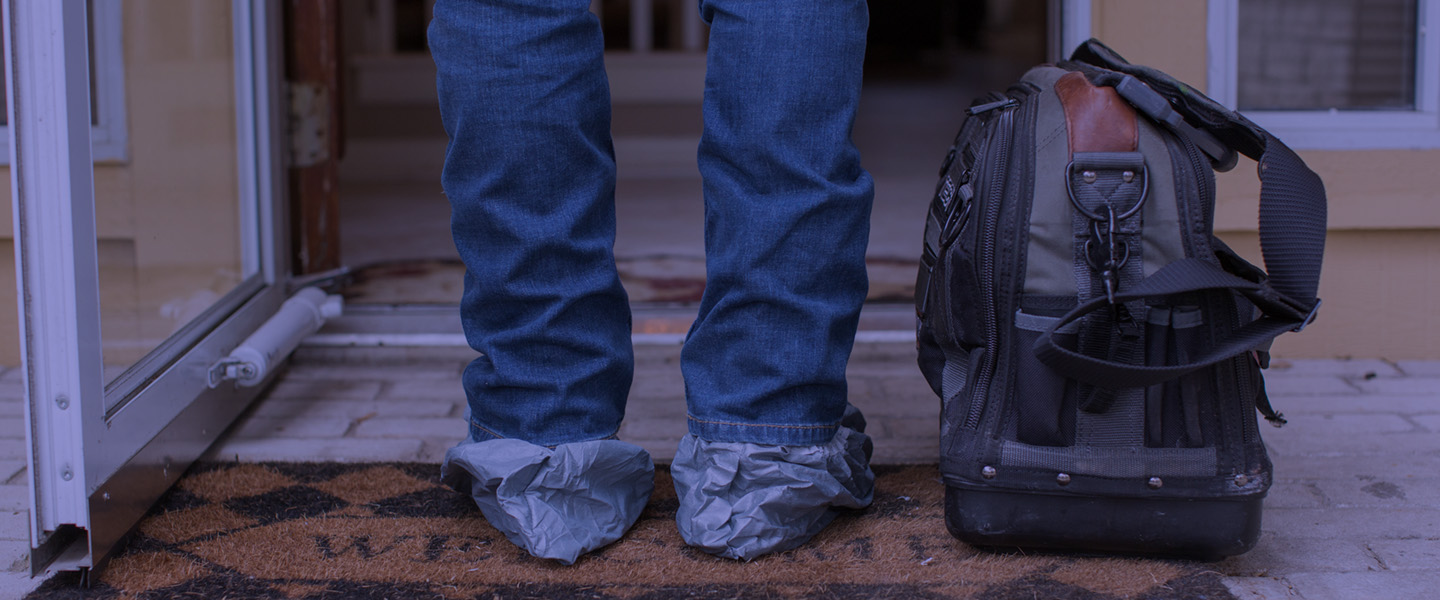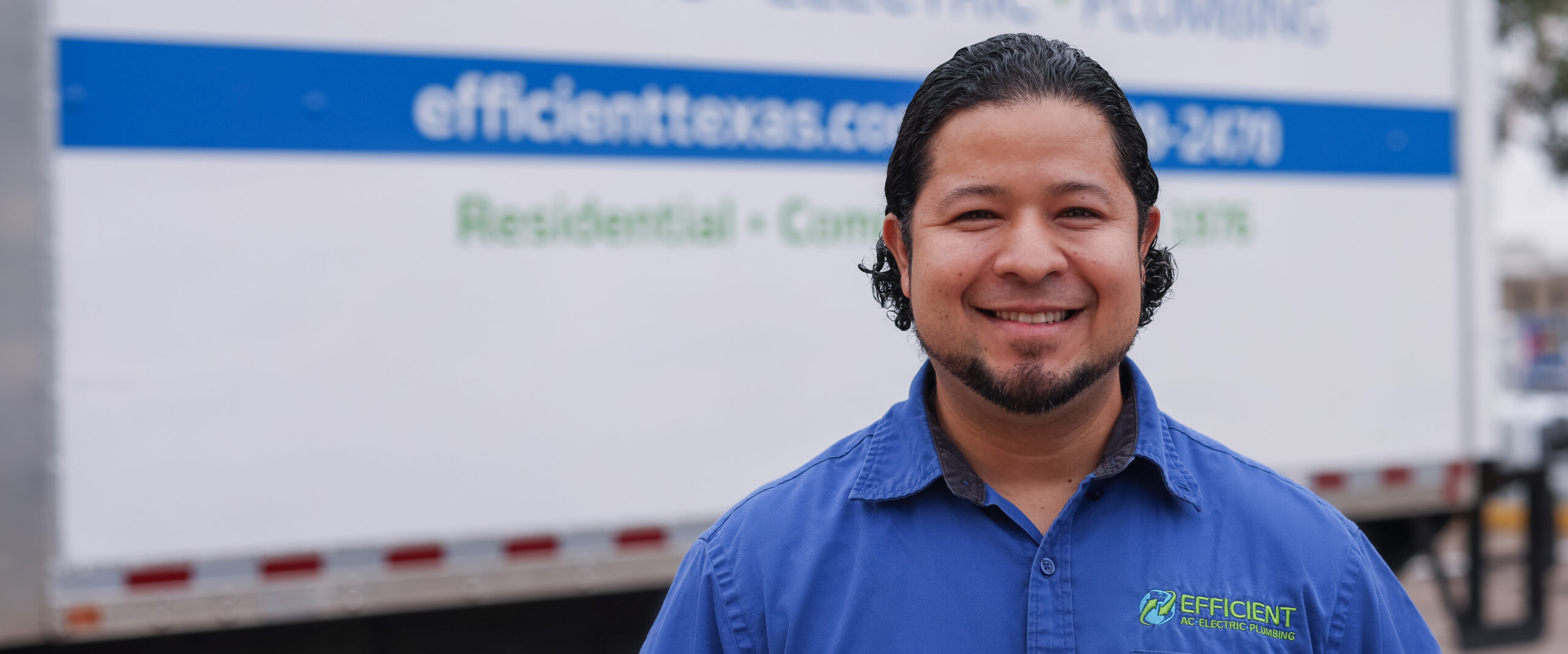0% for 36 Months or 10% off a New AC. Learn More >
Central Air Conditioner in Austin, Texas
If you’re considering replacing your central AC unit, the terms single-stage, two-stage and variable-speed are going to come up in your online searches and conversations with HVAC contractors. To make the right decision about which central air conditioner is right for you, it’s important to understand how each of these options will impact your comfort and budget. All of these terms refer to the speeds – or speed, in one case – at which a central air conditioning
system’s compressor can operate.
Types of Central AC Units: Single-Stage, Two-Stage and Variable-Speed
Single-Stage Central AC System
Imagine you’re driving, and your only means of maintaining the speed limit is to floor it or take your foot off the gas pedal. That’s single-stage technology. A single-stage central AC system is either on – full blast – or off. There’s no in between. This results in wasted energy and money.
This is not to say a single-stage system is never the right choice. It is the least expensive type of central air conditioning system to purchase, so if upfront cost is a more important factor to you than long-term operating costs and performance, it may be the right solution. However, if energy- and cost-efficiency are important to you, a two- or variable-speed AC unit is likely a better fit.
Two-Stage Central AC System
A two-stage central air conditioner has two levels of operation: low (approximately 70% of capacity) and high (100% of capacity). Most two-stage systems can meet cooling demands operating at the lower speed 80% of the time – even in Austin, Texas. This equates to significant savings over a single-stage system.
Variable-Speed Central AC System
A variable-speed central AC unit can operate at any percentage of its capacity, which means it only utilizes the energy necessary to meet cooling demands. Back to our driving example. The variable-speed scenario is more like using cruise control (we’re hypothesizing here, so there’s no Austin traffic to prevent us from doing this). You set it to the speed limit (temperature) you want, and it maintains it by adjusting its energy usage to the environment.
You go up a hill (higher outside temperature), and it uses more power. You go down a hill (lower outside temperature), and it uses less. The ability to tailor output to demand makes variable-speed units the most efficient and cost-effective to operate.
Benefits of two-speed and variable-speed central air conditioners
A single-stage system cycles on and off more frequently, while a two- or variable-speed central AC unit runs for longer at lower speeds – cycling on and off much less often. In addition to the energy and cost savings discussed above, this offers important advantages:
- More consistent comfort: Frequent on/off cycling means greater temperature swings. When a single-stage system kicks on, it often chills occupants with blasts of cold air. When it reaches the desired temperature, it shuts off, and the indoor environment grows increasingly warm and stuffy until the system delivers its next blast. By operating more continuously, a two-stage or variable-speed central AC unit can maintain the desired temperature with less variation.
- Humidity management: Many variable speed systems, including the Carrier Infinity series, can manage maximum humidity levels under most conditions. These systems run at low capacities for longer periods of time, increasing time on the cooling coil and therefore removing more moisture. They can also be set to slightly overcool when chasing your humidity setting. Our experience is that a properly sized variable capacity system in an average home can deliver humidity performance that eliminates the need for a separate dehumidifier.
- Feature-rich controls: In addition to Wi-Fi capability, variable capacity systems come with thermostats that offer:
- Management of other devices, such as high-end filters and dehumidifiers (or humidifiers, which are obviously not needed here in Central Texas).
- Maintenance alerts
- Flexible learning programming
- Improved zone controls, meaning they can control multiple rooms and scale operation down to affect only those areas that need cooling or heating.
- Quieter operation: Typical variable capacity systems, again such as the Carrier Infinity series, are nearly noise free most of the time. Only when chasing large temperature setbacks (temperature changes, driven by the user, typically over three degrees), do they ramp up operation and fan speeds.
- Highest practical efficiency: SEER (Seasonal Energy Efficiency Ratio) and EER (Energy Efficiency Ratio) ratings do not completely equate to the lowest utility bills. Variable systems, while sometimes not sporting much better SEER and EER ratings, will deliver the lowest electric bills. Think of a system that runs at lower capacity for twice as long, but with a quarter of the power consumption (essentially amp draw, as voltage is constant).
- Less wear and tear: Cycling on and off not only uses more power, but it also puts your central air conditioner under more stress. Less wear and tear can mean lower maintenance costs and longer lifespan, especially when coupled with proactive maintenance service. When properly maintained, it is not unusual to have variable systems run for 15 to 20 years without needing replacement.
Picking the Right Central Air Conditioner
In summary, careful consideration of needs, wants and budget will help you make the best selection. If the unit is for your primary residence, and you plan to stay for a while, consider the options that will make a difference for you. Most of our customers, once they experience the better two-stage or variable systems, never go back. Similar to buying a new car, spending more does get more. Unlike the typical car, spending more also gets better efficiency and at least a partial financial return – if not full – on the added upfront cost.
At Efficient AC, Electrical & Plumbing, we are experienced with repair and installation of all of these system types and can help you weigh your options. We have provided professional AC services and complimentary in-home AC replacement consultations all over the Austin area – from Kyle to Georgetown — since 1976. Call us at 512-501-2275 to schedule.

